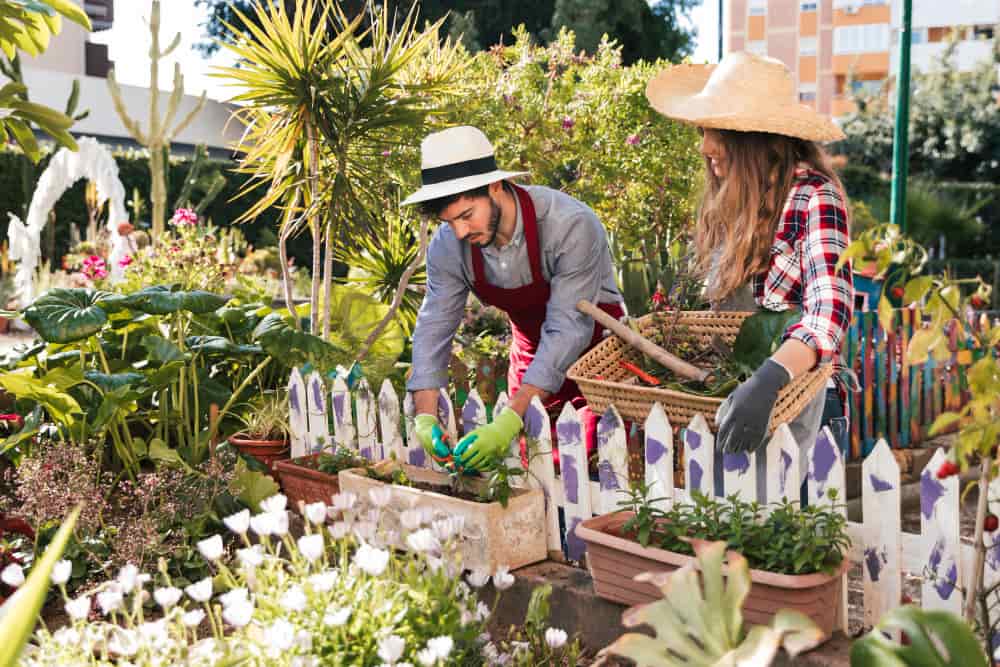Terrace Vegetable Garden Ideas in India: Maximizing Space for Fresh Produce
As urban spaces become increasingly limited, more and more people in India are turning to terrace vegetable gardening as a way to grow their own fresh produce. Whether you live in a bustling city or a quiet town, transforming your terrace into a productive vegetable garden is a rewarding and sustainable way to enjoy homegrown vegetables. In this article, we will explore practical and innovative terrace vegetable garden ideas in India to help you maximize your space and cultivate a thriving garden.
Why Choose Terrace Gardening?
Terrace Vegetable gardening is an excellent solution for those who have limited ground space but want to enjoy the benefits of growing their own vegetables. It allows urban dwellers to make the most of their available space, reduce their carbon footprint, and ensure a steady supply of fresh, organic produce. Additionally, terrace gardening can improve air quality, reduce urban heat, and create a relaxing green space in the midst of concrete jungles.
1. Vertical Gardening: Growing Upwards, Not Outwards
One of the best ways to maximize space on your terrace is by utilizing vertical gardening techniques. Vertical gardening involves growing plants upwards using trellises, wall-mounted planters, or vertical garden towers. This method is particularly effective for climbing plants like tomatoes, beans, cucumbers, and gourds, which can be trained to grow on trellises or netting.
Tips for Vertical Gardening:
- Select strong, lightweight materials for your supports and trellises.
- Opt for vertical planters with multiple pockets to grow different herbs and vegetables.
- Make sure you give your vertical garden enough water and sunlight.
2. Container Gardening: Flexibility and Mobility
Container gardening is another popular option for terrace vegetable gardens in India. Using pots, planters, and grow bags, you can create a flexible and movable garden that adapts to your space and sunlight availability. Vegetables of all kinds, including tomatoes, peppers, leafy greens, and herbs, grow best in containers.
Tips for Container Gardening:
- In order to avoid waterlogging, select containers with adequate drainage.
- For vital nutrients, use premium potting soil blended with compost.
- Regularly water and fertilize your container plants, as they tend to dry out faster than ground plants.
3. Hydroponics: Soil-Free Gardening
Hydroponics is an innovative soil-free gardening method that is gaining popularity in urban areas across India. This technique involves growing plants in nutrient-rich water solutions, allowing them to absorb all the essential nutrients directly from the water. Hydroponic systems can be set up on terraces with minimal space and can yield impressive results.
Benefits of Hydroponics:
- More yields and quicker growth than with conventional soil gardening.
- Water consumption is decreased because the system circulates water.
- Minimal risk of soil-borne diseases and pests.
Starting a Hydroponic Garden:
- Choose a hydroponic system that suits your space and budget, such as deep water culture, nutrient film technique, or drip systems.
- Ensure a stable water supply and regularly monitor the nutrient levels in the water.
- Consider growing leafy greens, herbs, and strawberries, which thrive in hydroponic systems.
4. Companion Planting: Boosting Growth Naturally
Using the companion planting technique, various plants are cultivated alongside one another for mutual benefit. Some plants have natural pest-repelling properties, while others improve soil health or attract beneficial insects. By strategically planting compatible vegetables and herbs together, you can enhance growth, reduce pest problems, and maximize space on your terrace.
Companion Planting Ideas:
- Grow tomatoes with basil to repel insects and enhance the flavor of tomatoes.
- Plant marigolds around your terrace vegetable garden to deter pests and attract pollinators.
- Pair beans with corn or spinach to improve soil fertility and provide shade.
5. Square Foot Gardening: Organized and Efficient
Square foot gardening is an efficient method that involves dividing your garden into small, manageable squares, each measuring one square foot. This technique is ideal for terrace Vegetable gardening, as it allows you to grow a variety of vegetables in a compact space. You may reduce wasted space and increase yields in your terrace vegetable garden by properly designing and setting things up.
Steps to Start Square Foot Gardening:
- Create a grid on your terrace using wooden frames, ropes, or chalk lines.
- Allocate each square foot to a different vegetable, taking into account their spacing requirements.
- Rotate crops each season to maintain soil fertility and prevent disease buildup.
6. Raised Beds: Improving Soil Quality and Drainage
Raised beds are a practical solution for terrace Vegetable gardening, especially if your terrace surface is uneven or has poor drainage. You can establish a regulated space with better drainage, higher-quality soil, and simpler access for planting and harvesting by constructing raised beds. Raised beds can be constructed from wood, bricks, or even recycled materials.
Building and Maintaining Raised Beds:
- Ensure that the raised bed is at least 6-12 inches deep to accommodate root growth.
- Fill the bed with a mixture of garden soil, compost, and organic matter.
- Regularly add compost and organic fertilizers to maintain soil fertility.
7. Using Trellises and Arches for Climbing Vegetables
Incorporating trellises and arches into your terrace Vegetable garden design allows you to grow climbing vegetables like beans, peas, and gourds vertically. This gives your yard a decorative touch in addition to saving space. Arches can also be used to create shaded areas where you can relax and enjoy your garden.
Designing with Trellises and Arches:
- Position trellises and arches in areas that receive plenty of sunlight.
- Use sturdy materials like bamboo, metal, or wood for construction.
- Train your plants to climb the structures by gently tying them as they grow.
Conclusion
Creating a terrace vegetable garden in India is a fantastic way to maximize your urban space and enjoy the benefits of fresh, homegrown produce. By implementing terrace vegetable garden ideas in India, you can transform even the smallest areas into a flourishing garden. Whether you choose vertical gardening, container gardening, hydroponics, or any other method, the key is to plan carefully, use space efficiently, and provide your plants with the care they need. With a little creativity and effort, your terrace can become a green oasis in the heart of the city, providing you with a bountiful harvest season after season.






